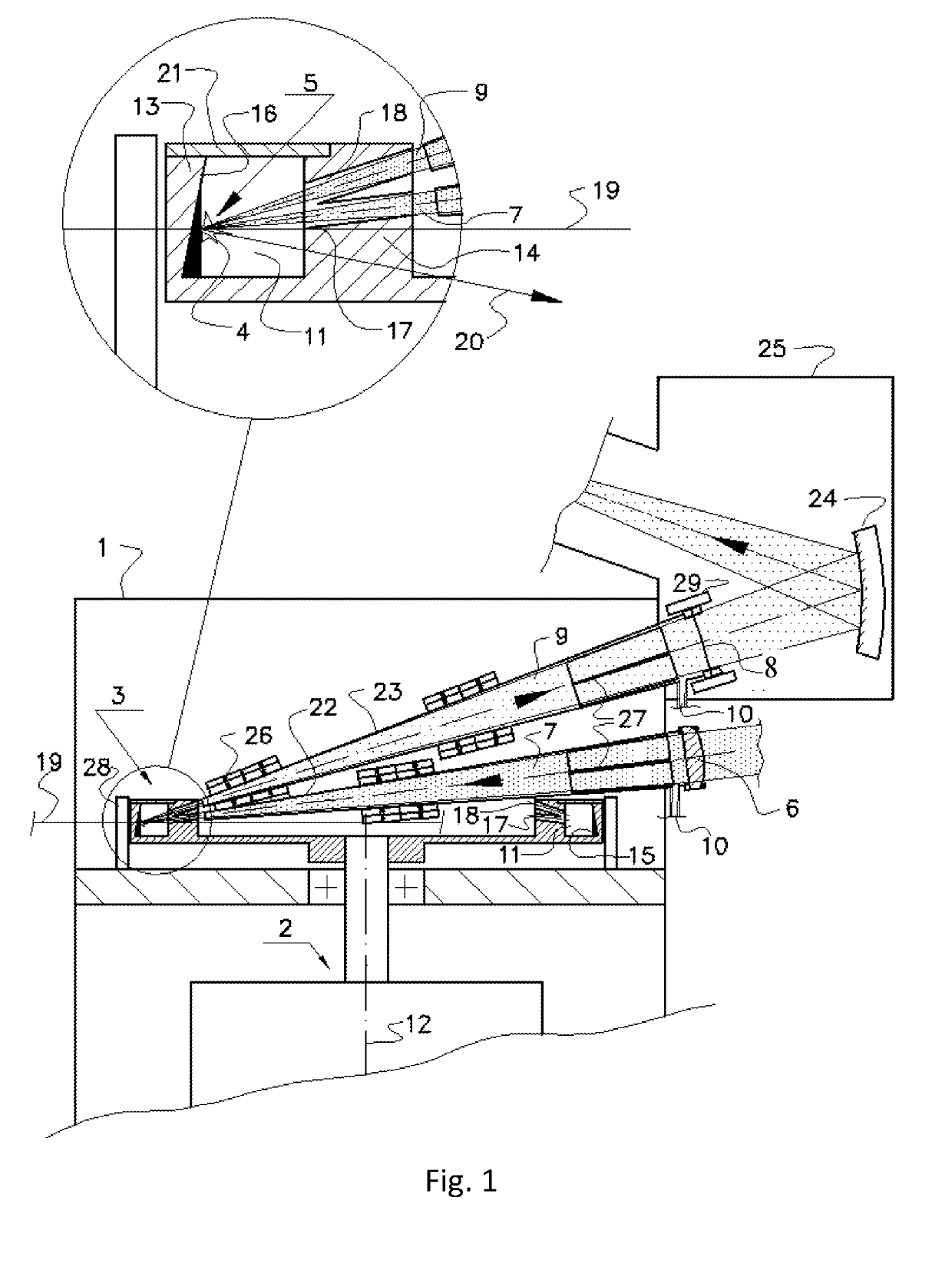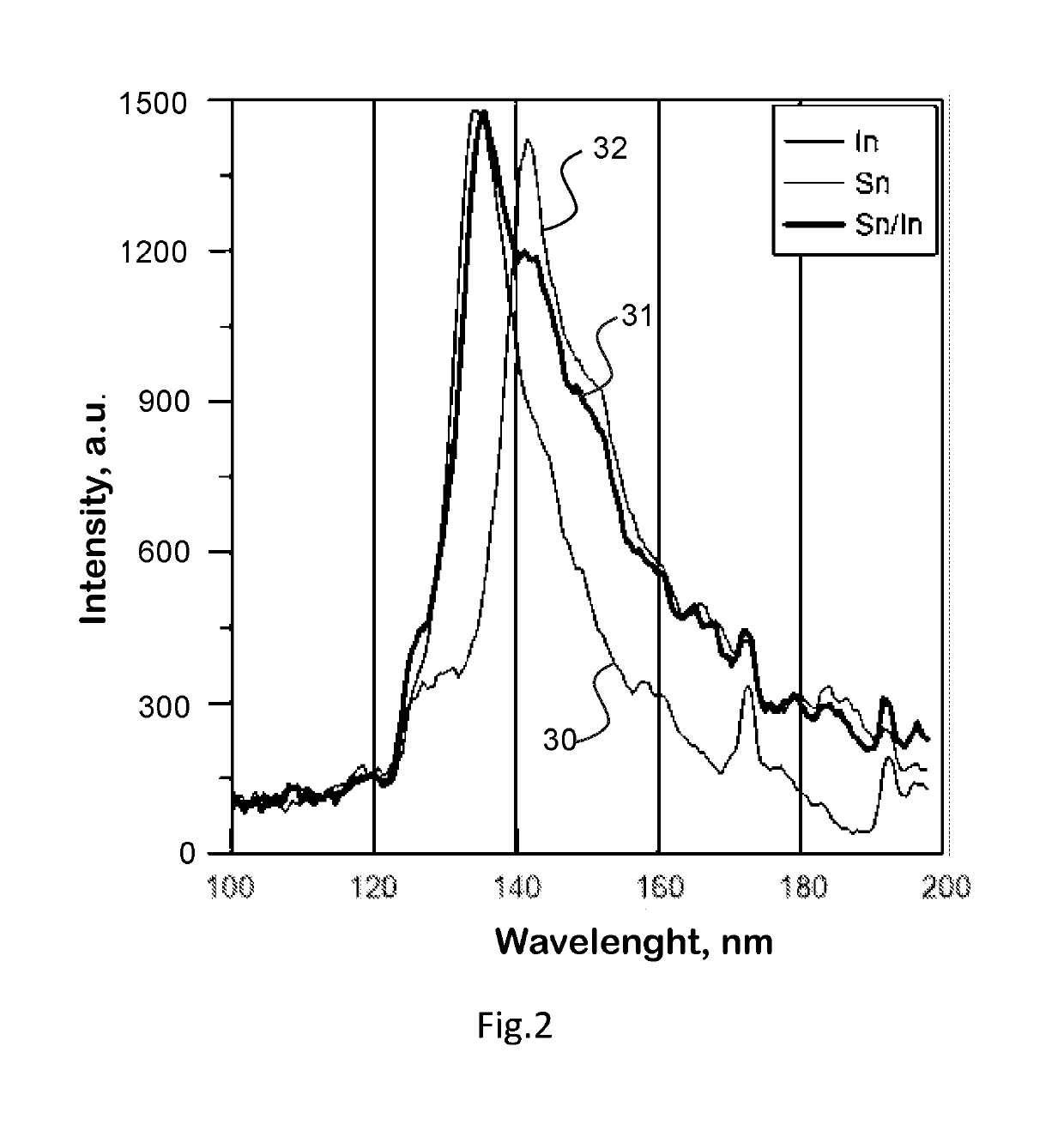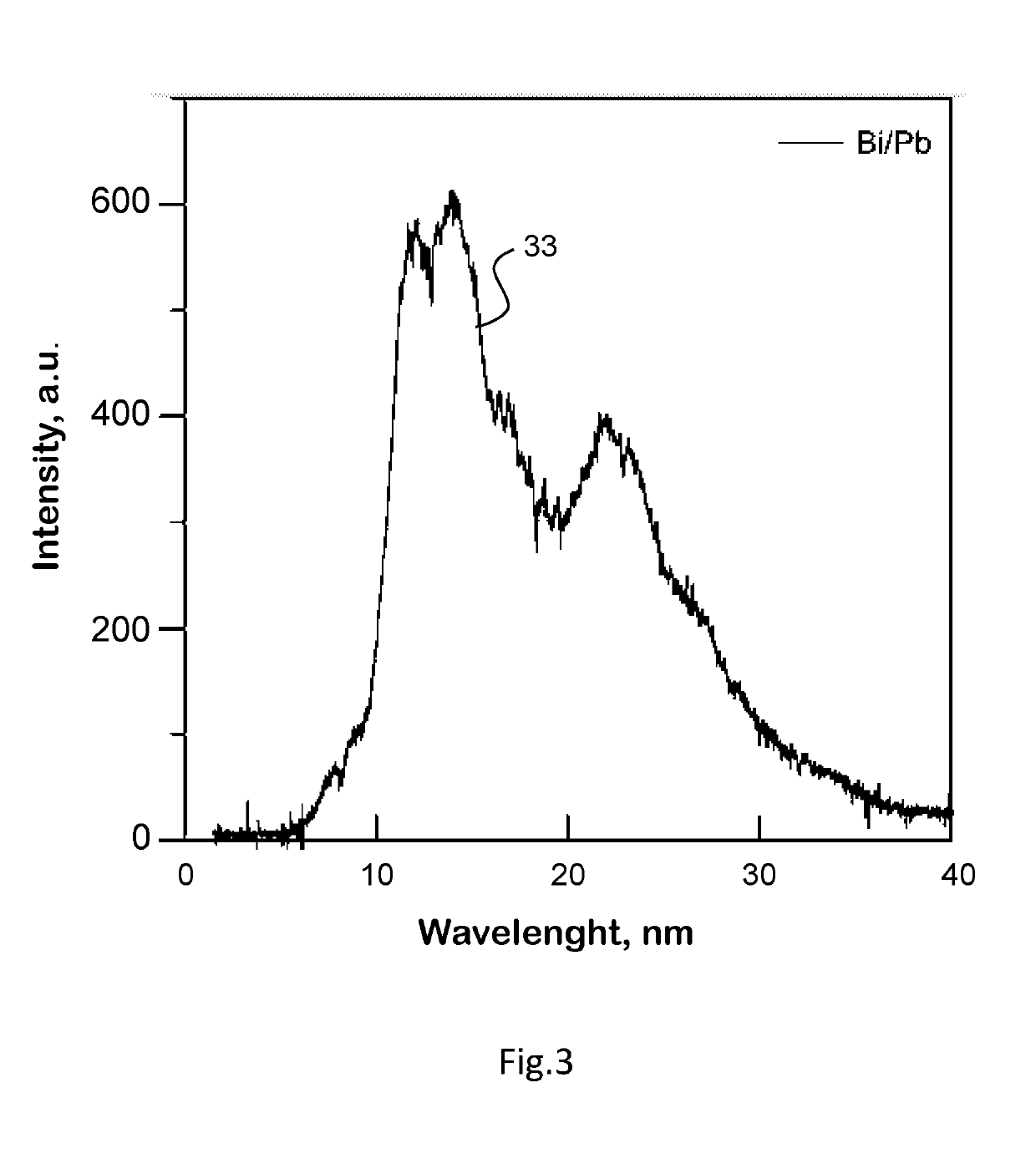High-brightness laser produced plasma source and methods for generating radiation and mitigating debris
a laser produced plasma and laser technology, applied in the direction of x-ray tubes, electric discharge tubes, x-ray apparatuses, etc., can solve the problems of high production cost, defect appearance on printed chips, and insufficient mask inspection, so as to reduce operating costs, reduce the level of debris, and increase the lifetime
- Summary
- Abstract
- Description
- Claims
- Application Information
AI Technical Summary
Benefits of technology
Problems solved by technology
Method used
Image
Examples
Embodiment Construction
[0042]According to the embodiment of the invention schematically shown in FIG. 1, an apparatus for generating short-wavelength radiation from laser-produced plasma LPP comprises: vacuum chamber 1 containing a rotating target assembly 3 which supplies a target 4 to an interaction zone 5, an input window 6 for a pulsed laser beam 7 focused into the interaction zone, an output window 8 for an exit of the short-wavelength radiation beam 9, and gas inlets 10.
[0043]The rotating target assembly 3 has an annular groove 11 with a distal wall 13 and a proximal wall 14 relative to the axis of rotation 12.
[0044]The plasma-forming target material 15 is a molten metal located inside the annular groove 11, and the target 4 is a layer of said molten metal formed by a centrifugal force on a surface 16 of the distal wall 13 of the annular groove 11.
[0045]The proximal wall 14 of the annular groove 11 is designed to provide a line of sight between the interaction zone 5 and both the input and output wi...
PUM
 Login to View More
Login to View More Abstract
Description
Claims
Application Information
 Login to View More
Login to View More - R&D
- Intellectual Property
- Life Sciences
- Materials
- Tech Scout
- Unparalleled Data Quality
- Higher Quality Content
- 60% Fewer Hallucinations
Browse by: Latest US Patents, China's latest patents, Technical Efficacy Thesaurus, Application Domain, Technology Topic, Popular Technical Reports.
© 2025 PatSnap. All rights reserved.Legal|Privacy policy|Modern Slavery Act Transparency Statement|Sitemap|About US| Contact US: help@patsnap.com



